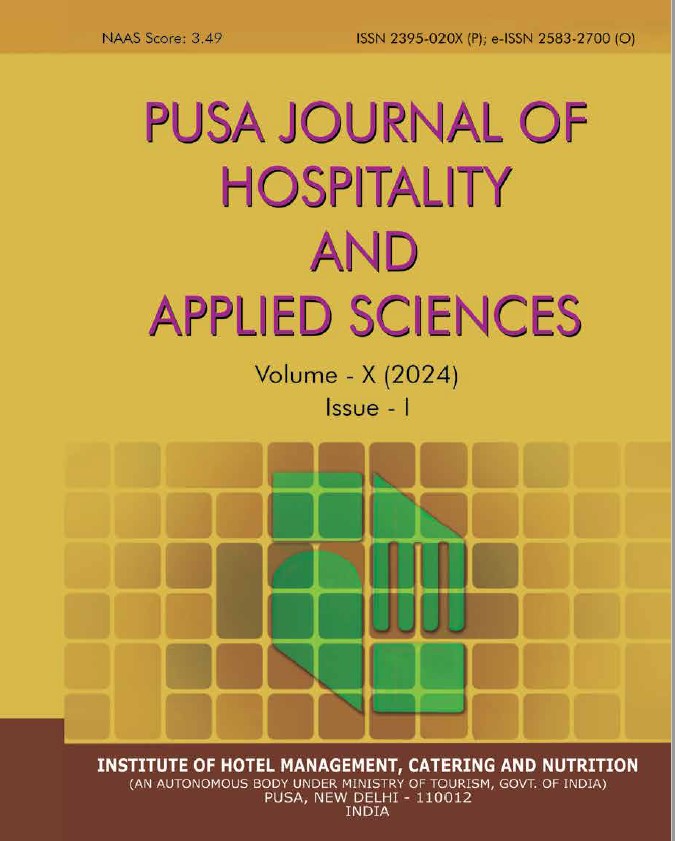Assessment Of Dietary Intake Of Moderately Anaemic Pregnant Women Visiting A Primary Health Centre In Delhi
Keywords:
Anaemia, Pregnancy, DietAbstract
Background: Even today, seven decades after independence, pregnancy anaemia remains one of the major public health problems in India; associated with increased risks like maternal mortality and low birth weight deliveries. Studies show that over 80% of all pregnant women in India are anaemic; and almost 20% of these have moderate anaemia (Hb 5.0 - 8.0 g/dl). Diet is one of the major factors that determine the nutritional status and haemoglobin levels of pregnant women. Though, over decades, there has been an improvement in the dietary intake of pregnant women, but their micronutrient intake is still much below their required allowances. Objective: To assess the dietary intake of moderately anaemic pregnant women (second trimester) in a primary health centre. Methodology: Diet survey was performed, 24 hour dietary recall was carried out on 141 moderately anaemic pregnant women who were in their second trimester of pregnancy and were visiting a primary health centre in Delhi for their antenatal checkup. Results: The data showed that majority (80%) of pregnant women had a two meal pattern in a day. Most of the meals comprised of cereals with pulse/vegetable; intake of fruits and green leafy vegetables was very low; hence their micronutrient intake, especially, iron and folic acid was below 50% of the RDA and this was one of the reasons for their low haemoglobin levels (5.0-7.9 g/dl). Conclusion: Data showed that intake of micronutrients, especially, iron and folic acid was low; this appears to be one of the major reasons for their moderate anaemia condition. The prevailing condition cannot be corrected with dietary changes alone and requires a more direct intervention too (giving intramuscular iron). Thus, all pregnant women coming for ante-natal checkup for the first time must be screened for their degree of anaemia and treated accordingly along with dietary modifications.
References
WHO/UNU/UNICEF. (2001). Iron deficiency anaemia: assessment, prevention and control. A guide for program managers. Geneva, Switzerland, World Health organization.
Kramer, M. M. (1987). Determinants of low birth weight: methodological assessment and metaanalysis. Bull WHO. 65, 668-737.
WHO. (1968). World Health organization. Nutritional Anaemias. Technical Report Series No. 405, 1968.
Luke, B. (1994). Nutritional influences on fetal growth. Clin Obstet Gynecol. 37(3), 538-49.
NNMB. (2002). National Nutrition Monitoring Bureau. Diet and nutritional status of rural population. NNMB Technical Report No. 21. Indian Council of Medical Research.
NNMB. (2006). National Nutrition Monitoring Bureau. Diet and nutritional status of population and prevalence of hypertension among adults in rural areas. NNMB Technical Report No. 24. Indian Council of Medical Research.
INP. (1998). India Nutrition Profile. Department of women and child development. Ministry of Human Resource Development, Government of India.
Ramachandran, P. (1989). Nutrition in Pregnancy. In: Gopalan C. Kaur S. eds. Women and Nutrition in India, New Delhi. Nutrition Foundation of India. Special Publication Series No. 5. 153.
Recommended Dietary Allowances for Indians. (2010). Indian Council of Medical Research, National Institute of Nutrition.
ICMR. (1989). Nutritive value of Indian Foods. Eds Gopalan. C., Ramasastry B. V., & Balasubramaniun SC. NIN, ICMR, Hyderabad.




